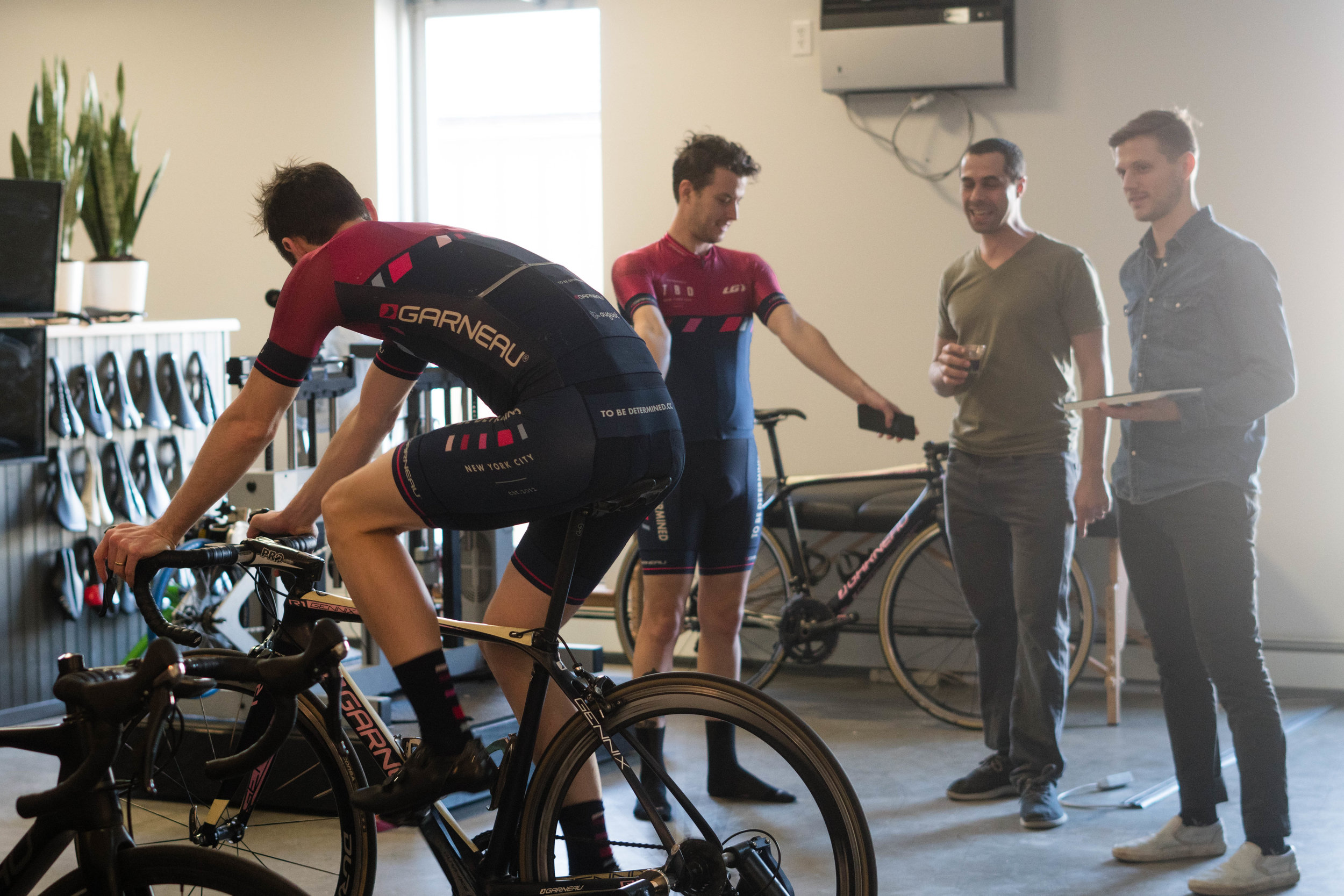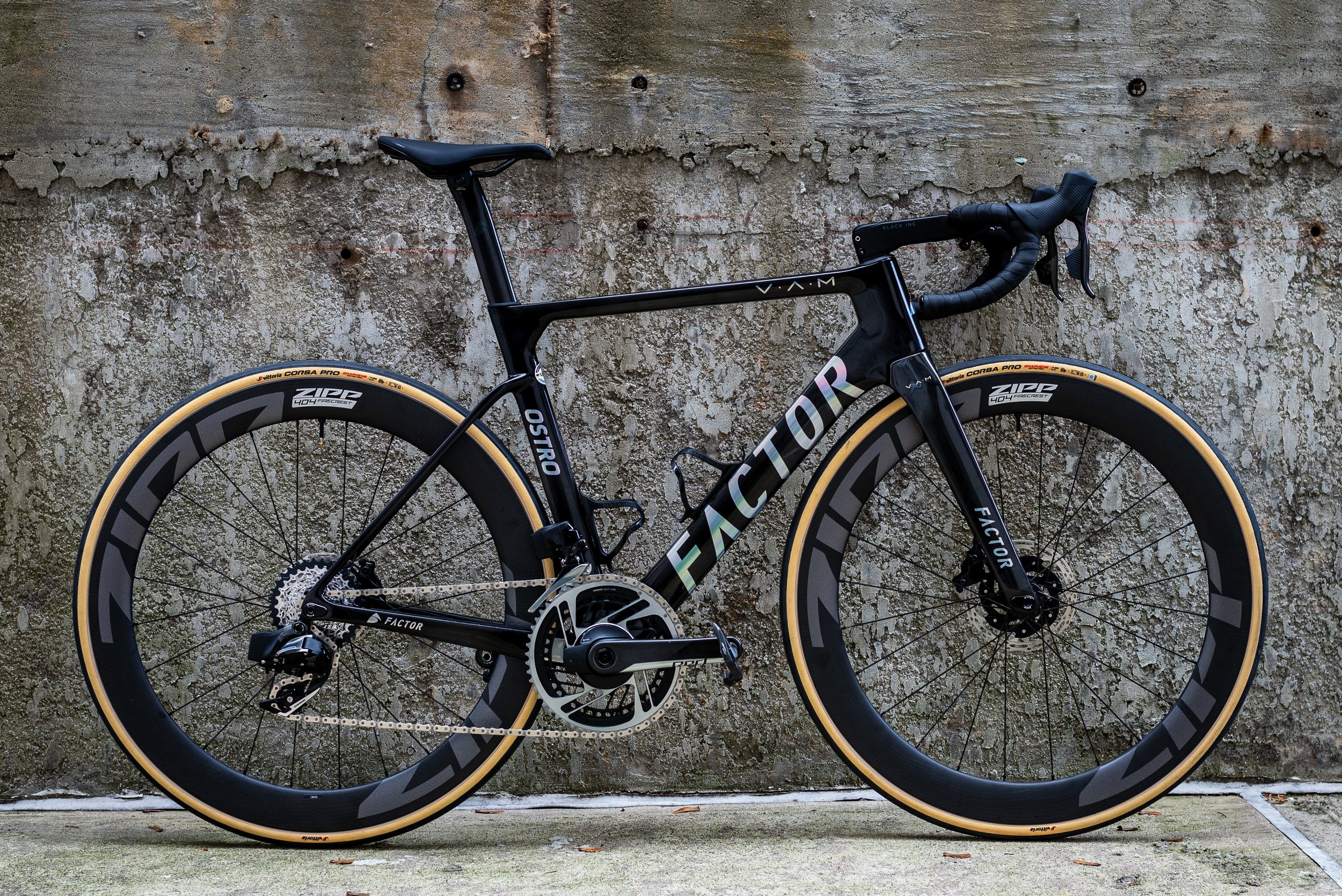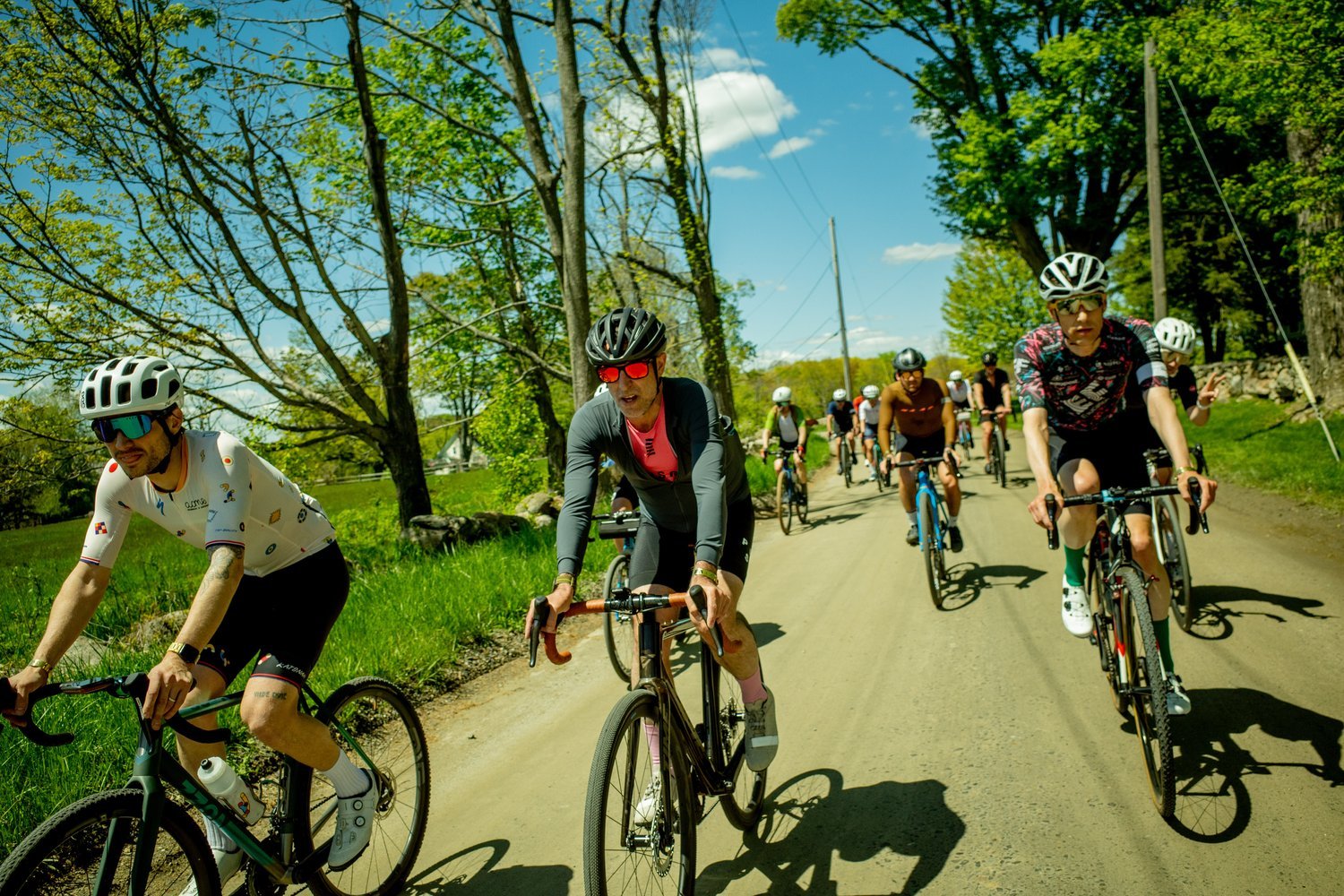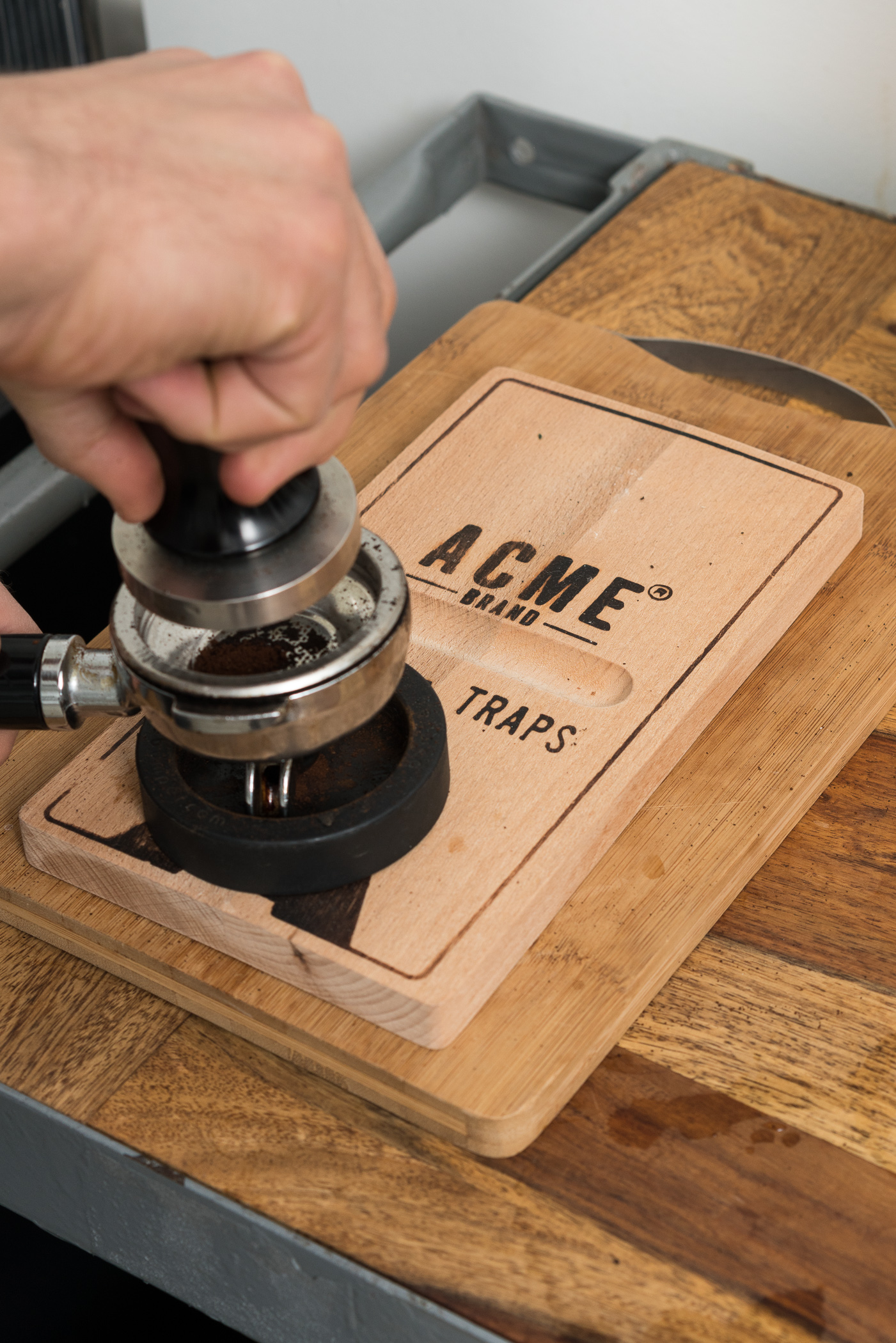Why you should get a bike fit for cyclocross
Arguably no other branch of cycling comes with as much gear and setup mystique as cyclocross. Yet despite so much consideration for things like tread types and drivetrains, the actual fit of the bike is something that’s often ignored, overlooked or given a backseat.
Photo @mattrideshis.bike
So let us tell you about the miracle of something that you probably did for your road bike but also should do for cyclocross: Get a bike fit. And before you say, “how different could it be from a road fit?” we say, “Very.”
What is not recommended: Googling how to fit your cross bike
The internet will tell you to set up your cross bike using your road bike as a benchmark. “Lower the saddle a little,” says one blog. “Raise the saddle," says another. Everyone seems to agree on a shorter stem. The flaw here is that your cross bike almost certainly has different geometry than your road bike; so the "lower the saddle and shorten the stem" model is, in a word, inaccurate.
Therefore it’s not surprising that most people start cross season and develop a serious case of “cross back” — something between moderate to extreme lower back pain experienced at the end of early season races.
What to expect from a professional fit
Colin Tanner from Acme Bicycle Co. is the best fitter in Brooklyn, if not New York, according to TBD. He’s also on our team, so he was the obvious choice for my cross bike fit.
The first thing he did was put me on my current cross bike and ask me questions about how I was feeling. Thoughts like “my right hip flexor is tight” or “my left hamstring is sore” preceded a short massage table exam similar to those conducted by physical therapists.
Colin then developed a few hypothesis about my fit: Perhaps my saddle was too high; perhaps my cleats weren’t well-configured; and a couple of other thoughts. Then we got on Acme’s GURU bike fitting system to find out.
The Guru Fit System
@mattrideshis.bike
The GURU Fit System
The GURU is a cool device. It looks like one of those mechanized rodeo bulls with an attached saddle and a set of handlebars, all of which is hooked up to a Wahoo Kickr.
In reality it’s a computerized fitting machine that adjusts your fit down to the millimeter even while you’re pedaling. And you can watch the changes and details on a big TV in front of you. It is … very neat.
The GURU also processes data from sensors to tell the fitter (Colin) about how your range of motion while pedaling — measurements like the range of the angle of your femur to tibia while pressure is applied to the pedal — compares with typical measurements from comfort, endurance, or aggressive racing fits.
What we learned
Colin set me up on the GURU machine, and we proceeded to go centimeter by centimeter until we had an aggressive but comfortable position for my cross bike.
First we discovered that the new CX bike I was about to buy in my usual size (L/56) would have been completely the wrong frame size. So, I saved about $2k right there. Phew.
Next I learned that my stem length was just fine, but that I needed another 10mm in spacers for an ideal reach. Saved another hundred bucks. We also adjusted my cleats, lowered my saddle an entire centimeter and moved everything about 10 mm forward. In the end I walked away feeling very comfortable on my bike.
The fitter's perspective: Having the right tools for the job - Colin Tanner
While it is not impossible to race cross on a bike setup to match your road setup, there is a better way. The bike fit should take into consideration the demands of each sport. To understand why you might want a different setup on your cross bike and your road bike we should lay out a couple of key aspects that affect the fit.
Handling and weight balance
The odds of losing a wheel through a turn and the focus on bike-handling skills are much greater on a cx bike. So, optimizing the balance of the rider’s weight on the bike is an influencing factor when it comes to how the bike responds as you head into slippery, difficult, off-camber turns. For this reason, a cyclocross fit should look to put the rider in a position on the bike where their weight is easily modulated between the front and back wheel as the conditions dictate.
Equipment choice
From pedals to handlebar width to saddles, there are solid reasons not to just copy and paste your road setup to your cross bike. MTB style pedals will require different adjustments as they influence seat height and position of the foot on the pedal. Handlebar width can be changed to affect handling and stability. Saddles are for more than sitting on a cross bike, they are mounted, slid upon for weight balance and used to stabilize the bike when out of the saddle.
Physical demands
For most road riding, the effort is more or less sustained, that is, you are holding a relatively steady power. In cross, there is stochasticity in the power required; sprinting out of corners, up short hills, through mud, in and out of the saddle throughout. For most riders this tends to change pedaling dynamics a great deal; riders tend to drop the heel and straighten the knee in search of every last watt.
While a typical cross rider is only racing for 45 minutes to an hour, the demands are intense and the little mistakes add up. Each detail from tire selection, to handlebar width ultimately influence your performance on the course. Give each aspect attention and the odds of success increase. Making sure your machine is optimized to you is a vital piece of the puzzle.
Takeaways: How to convince your friends about this
Unlike shaving your legs (which we support regardless of "real" reasons or rules) there are some other tangible, actual reasons for doing everything we just suggested. Here they are:
- The average racing cyclist will accrue a closet-full of discarded saddles, stems, shoes, handlebars, and other components that they discovered weren’t the right size after buying. This is why when folks say “bike fits are too expensive,” the correct response should be: “buying the wrong stuff is more expensive.” This is arguably more true for cross than for road, because the chances are good that you’ll be breaking and buying new components at least once a season.
- Injury prevention: In the month since my fit, I haven’t had “cross back” once despite training almost exclusively on the cross bike since. My hamstrings feel good again and I haven’t had any numbness in my feet. So when folks say “cross back is part of cross” I will silently think “actually you just need to sit on a GURU with Colin for an hour and all of your problems will be solved."
All photos thanks to Matthew Story (@mattrideshis.bike)


















Join us and ACME Bicycle Co and many of your favorite bicycle industry brands for the third annual Neutral Ground Event on Saturday June 7th in Katonah!